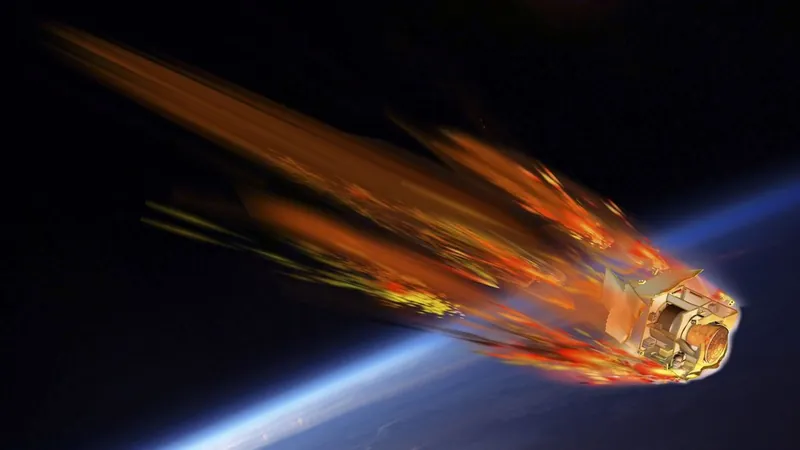
Europe Plans Groundbreaking 2027 Satellite Mission to Study Fiery Reentry
2024-09-27
Introduction
In a bold move to tackle the rampant issue of space debris, the European Space Agency (ESA) has announced plans to launch a satellite in 2027 specifically designed to observe its own dramatic descent and disintegration as it reenters Earth’s atmosphere. This innovative mission aims to provide crucial insights into how satellites can be engineered to burn up entirely upon reentry, minimizing their environmental impact.
The DRACO Satellite
The satellite, dubbed the Destructive Reentry Assessment Container Object (DRACO), is being developed by the European technology group Deimos. Weighing in at 440 pounds (approximately 200 kilograms) and the size of a washing machine, DRACO will be equipped with state-of-the-art sensors and cameras to capture invaluable data during reentry.
Mission Objectives
ESA has set multiple objectives for this mission, including investigating the breakup dynamics of spacecraft during reentry, as well as understanding the resulting environmental effects. Specifically, the agency is keen to learn how components of satellites interact with the upper atmosphere and the byproducts that result from these fiery encounters.
Unique Features of DRACO
A unique feature of DRACO is its specially designed 15.7-inch (40-centimeter) capsule, which is engineered to withstand the extreme conditions of reentry while simultaneously measuring critical variables such as temperature and atmospheric pressure. After completion of its descent, this capsule will deploy a parachute, allowing it to float down and transmit the vital data collected by DRACO's four cameras and 200 sensors before it ultimately plunges into the ocean.
Expert Insights
Holger Krag, ESA’s head of space safety, emphasized the importance of this mission in improving our understanding of satellite reentries, stating, "Reentry science is essential for our design for demise efforts. The unique data collected by DRACO will refine our models and guide the development of next-generation, demisable satellites by 2030."
Zero Debris Charter
In line with this mission, the DRACO project is part of ESA’s ambitious Zero Debris charter, which aims to eliminate the creation of new space debris by 2030. This initiative complements last year's successful guided reentry of the Aeolus satellite, marking the agency's commitment to advancing space safety and environmental stewardship.
Conclusion
As we look forward to this pioneering mission set to launch in 2027, the world eagerly anticipates how DRACO's findings will shape the future of satellite design and contribute to a cleaner, safer space environment. Stay tuned, as this groundbreaking endeavor may very well redefine our approach to space sustainability!

 Brasil (PT)
Brasil (PT)
 Canada (EN)
Canada (EN)
 Chile (ES)
Chile (ES)
 España (ES)
España (ES)
 France (FR)
France (FR)
 Hong Kong (EN)
Hong Kong (EN)
 Italia (IT)
Italia (IT)
 日本 (JA)
日本 (JA)
 Magyarország (HU)
Magyarország (HU)
 Norge (NO)
Norge (NO)
 Polska (PL)
Polska (PL)
 Schweiz (DE)
Schweiz (DE)
 Singapore (EN)
Singapore (EN)
 Sverige (SV)
Sverige (SV)
 Suomi (FI)
Suomi (FI)
 Türkiye (TR)
Türkiye (TR)